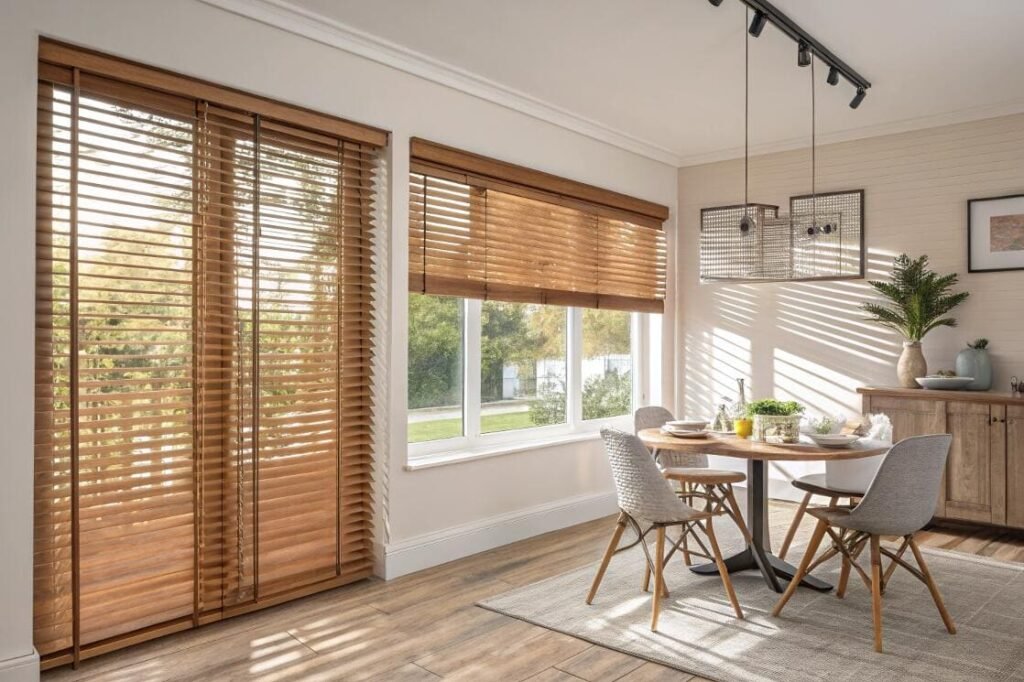You need to specify a window treatment, but the simple Venetian blind has hidden complexities. Understanding how its mechanism works is key to choosing the right system and avoiding future issues for your client.
Venetian blinds[^1] work using two core systems. A set of lift cords raises and lowers the entire blind, and a separate tilter mechanism rotates the slats to control the angle of light and the level of privacy.

As someone who designs and sources blind systems, I’ve learned that the genius of the Venetian blind is in its simple, effective mechanics. But "simple" doesn’t mean "one size fits all." For a project designer like Emma, knowing the difference between a standard cord lock and a quiet, integrated motor is everything. Let’s pull back the curtain and look at how these timeless blinds actually function, from the basic pull-cord to the fully automated smart systems we build today.
How do Venetian blinds actually go up and down?
Your client wants to know how the blind physically operates. You need to explain the distinct mechanisms for lifting the blind versus just tilting the slats, to show you command the technical details.
Raising the blinds involves pulling lift cords[^2] that run through the slats, which are then held in place by a locking mechanism in the headrail. Tilting is handled by a separate wand or cord that rotates the ladder structure holding the slats.
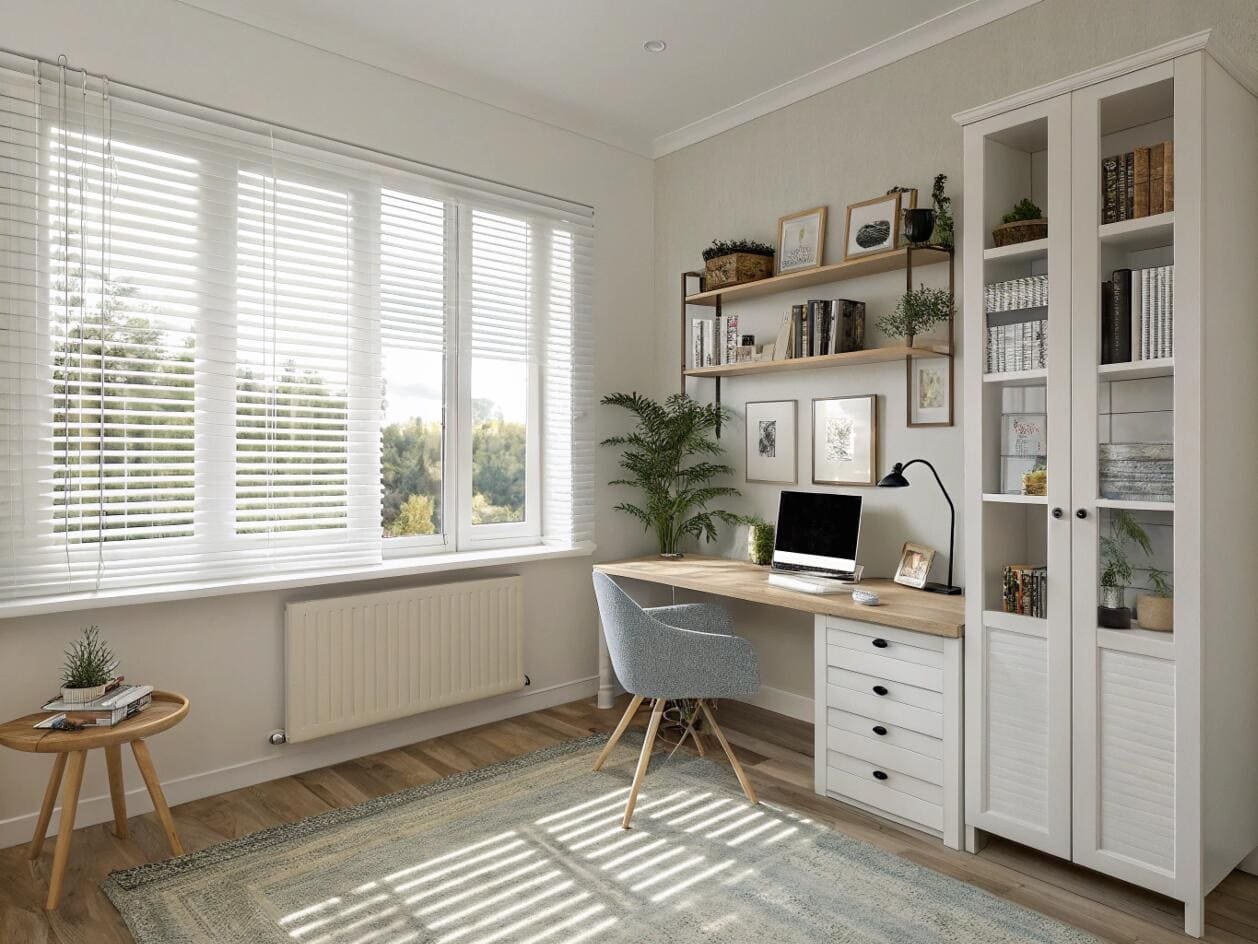
The magic of a Venetian blind happens inside the headrail, the metal box at the top. It houses two independent systems that give you full control.
| Component | Function | How it Works |
|---|---|---|
| Lift Cords | To raise and lower the blind | These cords run down from the headrail through holes in each slat. Pulling the cords equally lifts the stack of slats from the bottom up. |
| Cord Lock | To hold the blind at a certain height | This is a small wheel with teeth. When you pull the lift cords to the side, it releases the lock. When you let them go straight down, the teeth grip the cord. |
| Ladder Cords/Tapes | To hold and tilt the slats | These are the thin, ladder-like structures the slats rest on. They are attached to a rotator drum in the headrail. |
| Tilter Mechanism | To rotate the slats | Turning a wand or pulling a dedicated tilt cord rotates the drum, which in turn moves the ladder cords, changing the angle of all the slats at once. |
Understanding this separation is key. A failure in the lift mechanism doesn’t affect the tilt, and vice versa. This modular design has made Venetian blinds reliable for centuries.
How do smart motorized blinds integrate with a home system?
Your high-end project requires seamless automation. You need to explain how a "dumb" blind becomes a "smart" device that can respond to an app, voice command, or pre-set schedule.
Motorized blinds have a tubular motor inside the headrail. This motor receives wireless commands (RF or Zigbee) from a remote or a smart home hub, which then drives the mechanism to lift or tilt the blinds automatically.
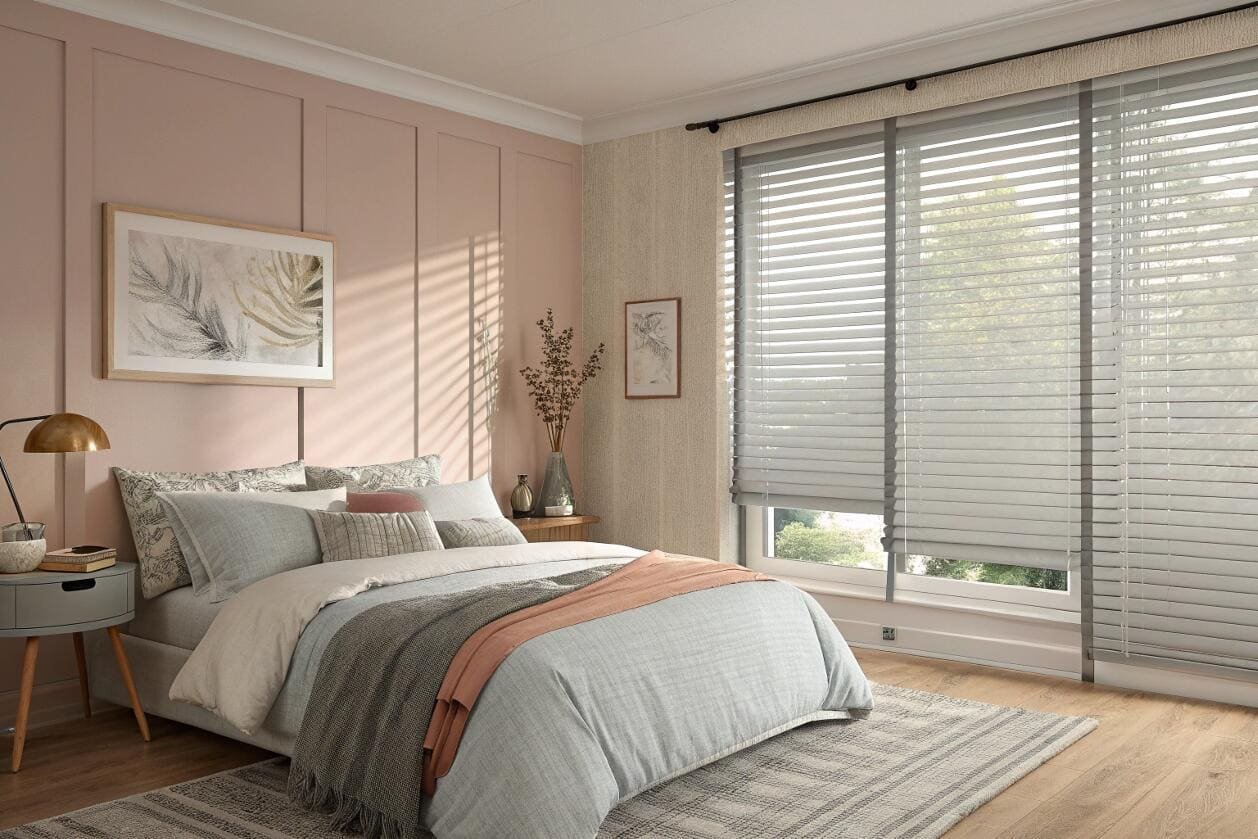
Connecting a blind to a smart home like an Alexa or Google Home system involves a few key components. At VelaBlinds, we specialize in making this integration seamless. It starts with replacing the manual cord systems with a low-voltage tubular motor hidden within the blind’s headrail. This motor is powered either by a rechargeable battery pack or a discreet hardwired connection. It has a built-in radio receiver. A smart hub acts as the translator between your home’s Wi-Fi network and the blind’s radio frequency. When you say, "Alexa, close the living room blinds," the command goes to the hub, which translates it into a specific radio signal sent directly to the motor. This allows for individual control, group control, and scheduling, turning the blinds into a truly automated part of the home’s ecosystem.
How do you attach Venetian blinds to a window?
Your client is asking about installation. You need to explain the mounting options and assure them that a professional, secure fit is the standard for your projects.
Venetian blinds are attached using installation brackets. For a secure, permanent fit, these brackets are drilled into the window casing (inside mount[^3]) or the wall/trim above the window (outside mount[^4]).
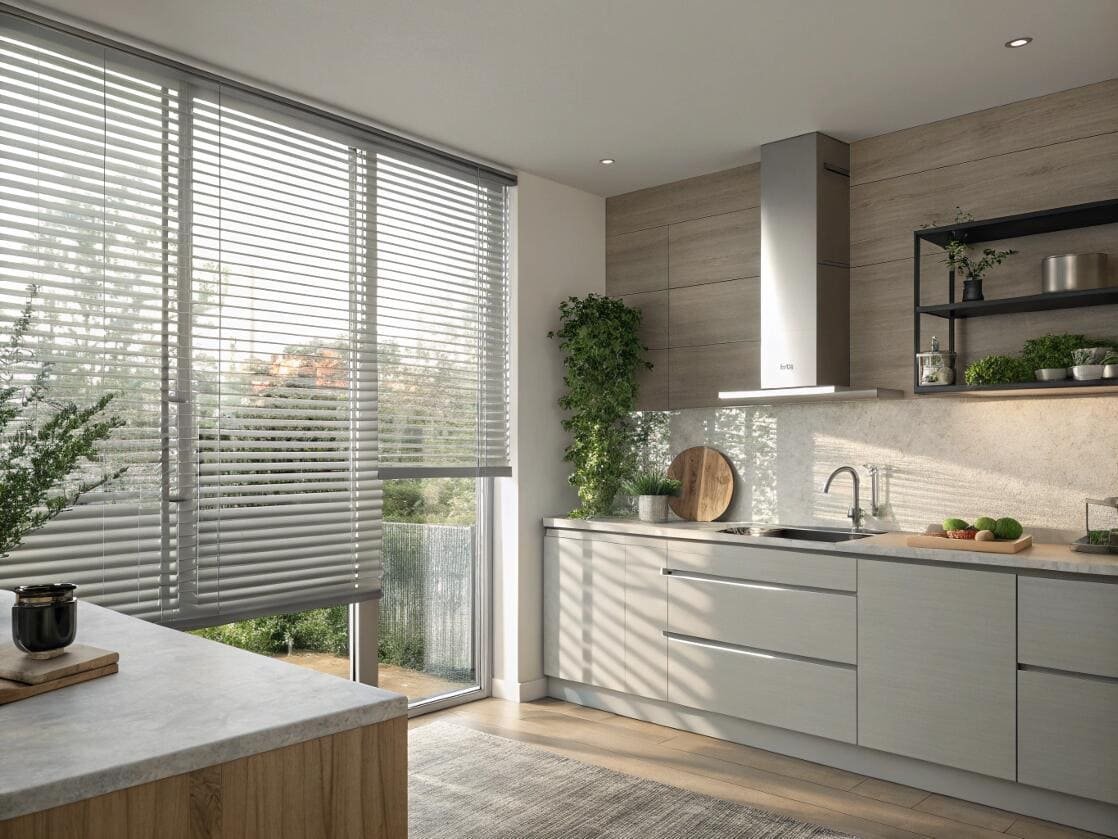
One of the first decisions for any installation is where to mount the blind. Each method has its purpose.
| Mount Type | Best For | Pros | Cons |
|---|---|---|---|
| Inside Mount | A clean, minimalist look. Deep-set windows. | Sits flush inside the frame. Doesn’t cover decorative trim. | Slight light gaps on the sides. Requires precise measurements. |
| Outside Mount | Covering imperfect windows. Maximum light blocking. | Hides the window frame. Blocks more light. More forgiving measurements. | Protrudes into the room. Covers up decorative molding. |
While you may see "no-drill" blinds advertised, these are typically temporary solutions using tension rods or adhesives. For a high-quality, permanent installation like those on Emma’s projects, drilling is essential. It ensures the blind is secure, operates smoothly, and poses no safety hazard. At VelaBlinds, we always supply high-quality brackets designed for a robust, permanent installation.
Which way do you turn the slats for the most privacy?
The sun is setting, and your client wants to close off the room. They want to know the correct way to angle the blinds to ensure no one can see in from the outside.
For maximum privacy and light blocking, you should tilt the blinds so that the rounded, convex side of the slats is facing outwards, towards the glass. This ensures the edges overlap and close off the view completely.

This small adjustment makes a big difference. When you tilt the blinds so the concave ("scooped") side is facing out, a small viewing angle is still possible from the outside between the slats. However, by turning them the other way so the convex ("humped") side is out, each slat presses firmly against the edge of the one below it. This creates a much tighter seal. This technique not only maximizes privacy but also provides the best room-darkening effect possible with a Venetian blind. Furthermore, this orientation is beneficial for energy efficiency. In the summer, closing them this way reflects the maximum amount of solar heat away from the glass, helping to keep the room cooler.
What is better, horizontal or vertical blinds?
Your project includes both standard windows and a large sliding glass door. You need to decide which blind orientation is appropriate for each, based on function and aesthetics.
Horizontal blinds (Venetian) are the superior choice for standard windows as they allow you to direct light up or down. Vertical blinds are designed for wide windows or sliding doors, as they stack to the side.
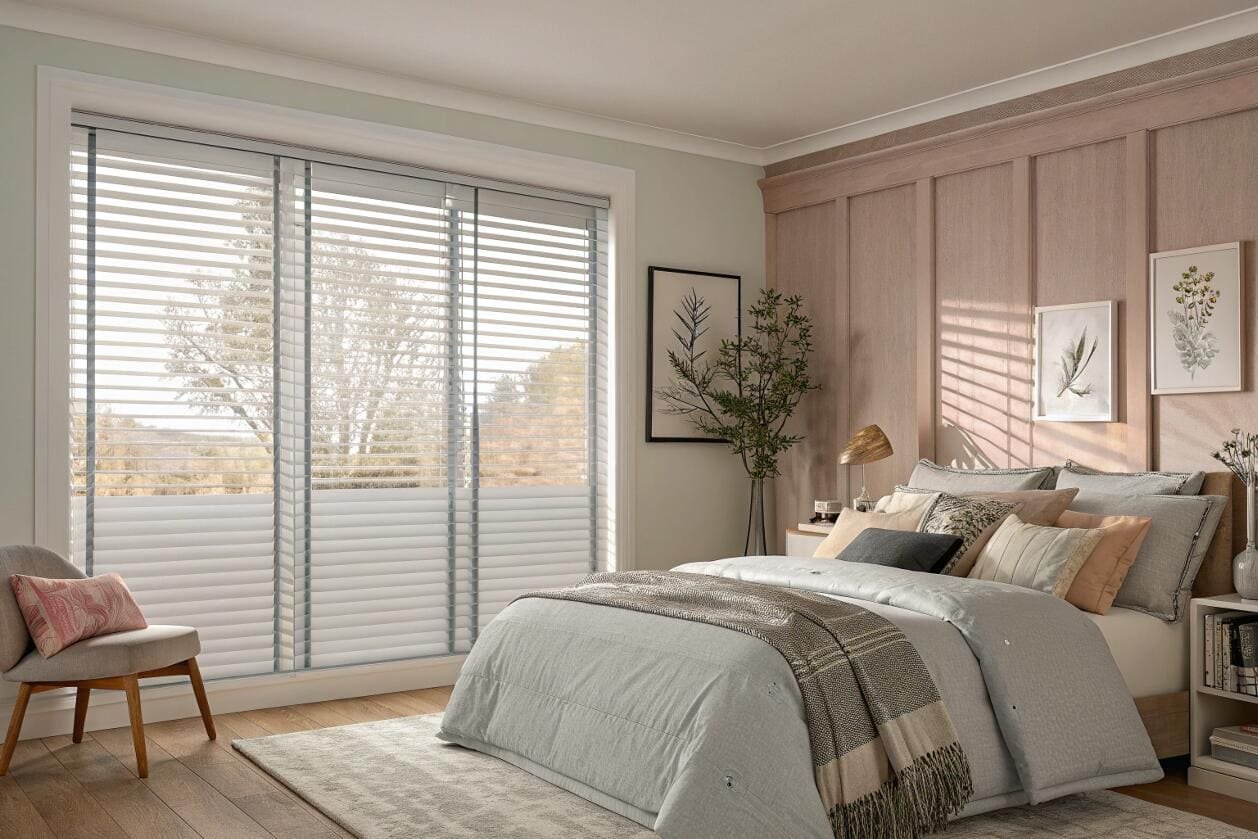
Choosing between horizontal and vertical blinds is mostly about the size and function of the window you’re covering. Horizontal blinds are much more versatile for light control on typical windows because you can tilt the slats to bounce light onto the ceiling or direct it down to the floor. Their main drawback is that when fully raised, they create a thick, sometimes cumbersome stack at the top of the window. Vertical blinds solve this stacking problem for patio doors and massive windows. They move sideways, stacking neatly out of the way to allow you to walk through the door. However, they offer less precise light control and can sometimes sway in a breeze. For most residential and commercial projects, horizontal Venetian blinds offer the best combination of performance and classic style.
Conclusion
Understanding how Venetian blinds work—from their basic gears and cords to their smart home compatibility—is essential. It empowers you to choose the perfect system for any window, ensuring both flawless function and lasting style for your projects.
---
[^1]: Explore the advantages of Venetian blinds for style and functionality in your home.
[^2]: Learn about the mechanics of lift cords and their role in operating Venetian blinds.
[^3]: Understand the benefits of inside mounting for a clean and minimalist look.
[^4]: Learn when outside mounting is the best option for your window treatments.Partner with VelaBlinds for Your Next Project
Smart window treatments shouldn’t be complicated. After working with 500+ distributors and contractors worldwide, I’ve streamlined the process to get you quality products, competitive pricing, and reliable support – every time.
Why project professionals choose VelaBlinds:
- ✅ Fast, Accurate Quotes – Detailed specs and pricing within 24 hours
- ✅ Transparent Pricing – No hidden fees, volume discounts clearly outlined
- ✅ Quality Assurance – Direct partnerships with certified OEM manufacturers
- ✅ Project Support – Dedicated account manager from quote to delivery
Start your next project:
📧 Quick Quote: Send your requirements to info@velablinds.com
📱 Direct Contact: WhatsApp +86 137 2012 8317
🌐 Browse Solutions: https://velablinds.com/
📁 Product Resources: Access spec sheets, catalogs & project files
Paul Chen, Founder
"I built VelaBlinds to solve the real challenges I faced as a project buyer – long lead times, unclear specs, and unreliable suppliers. Let’s discuss how we can power your projects with smarter blinds."
Serving distributors and contractors across North America, Europe, and Australia since 2018.

